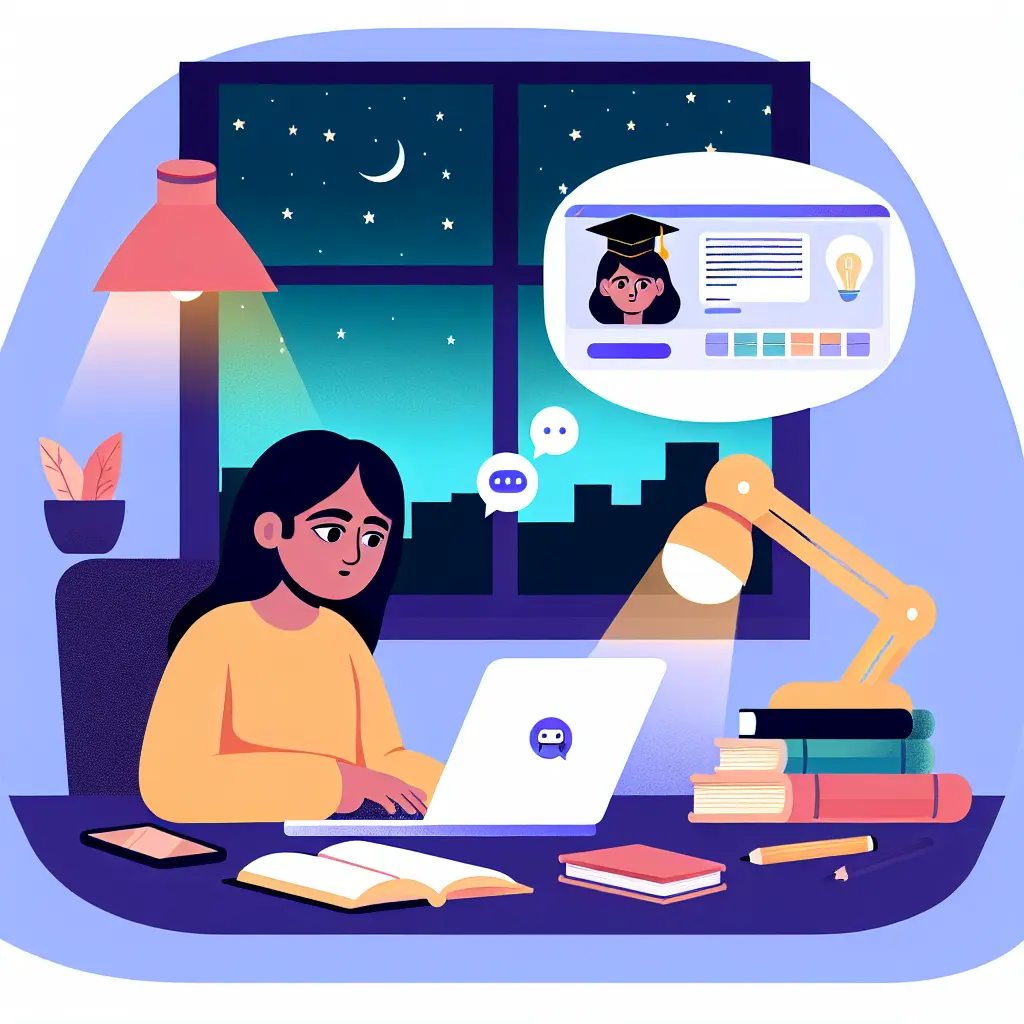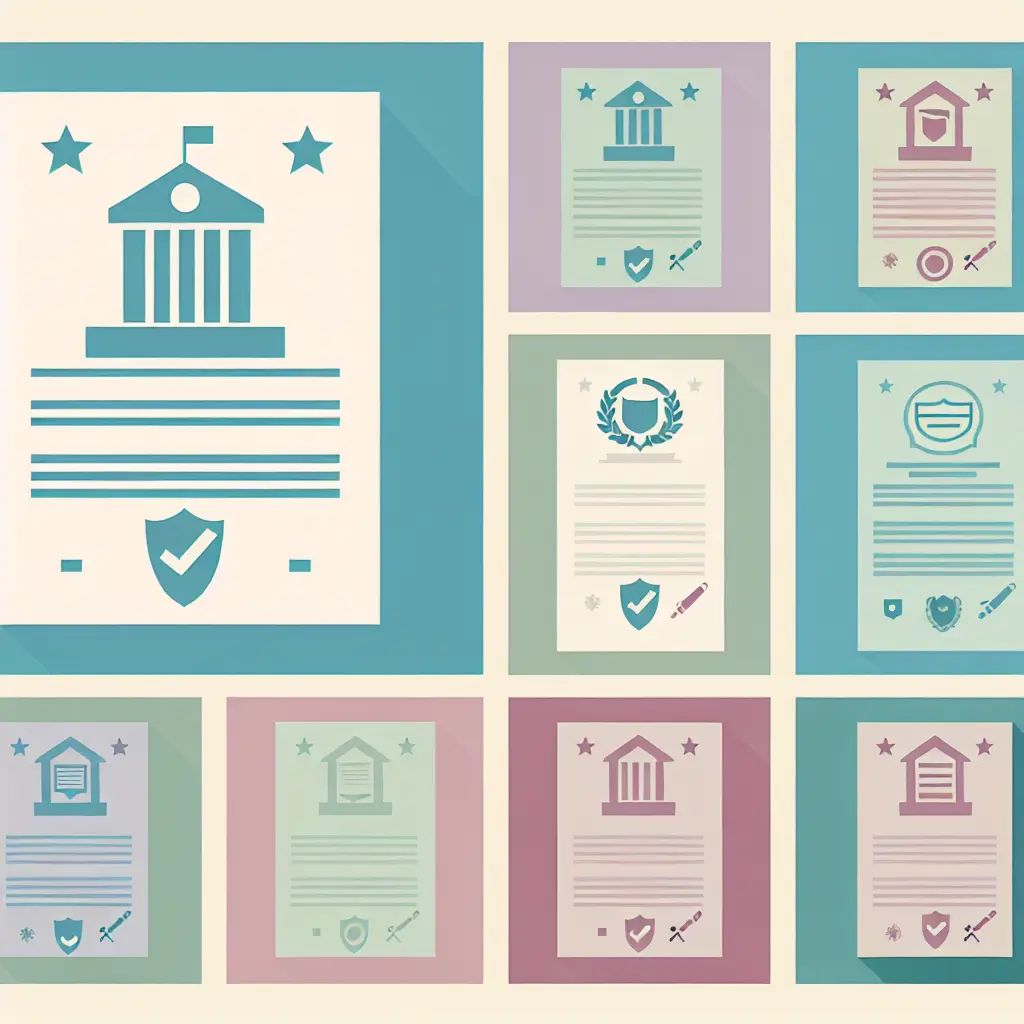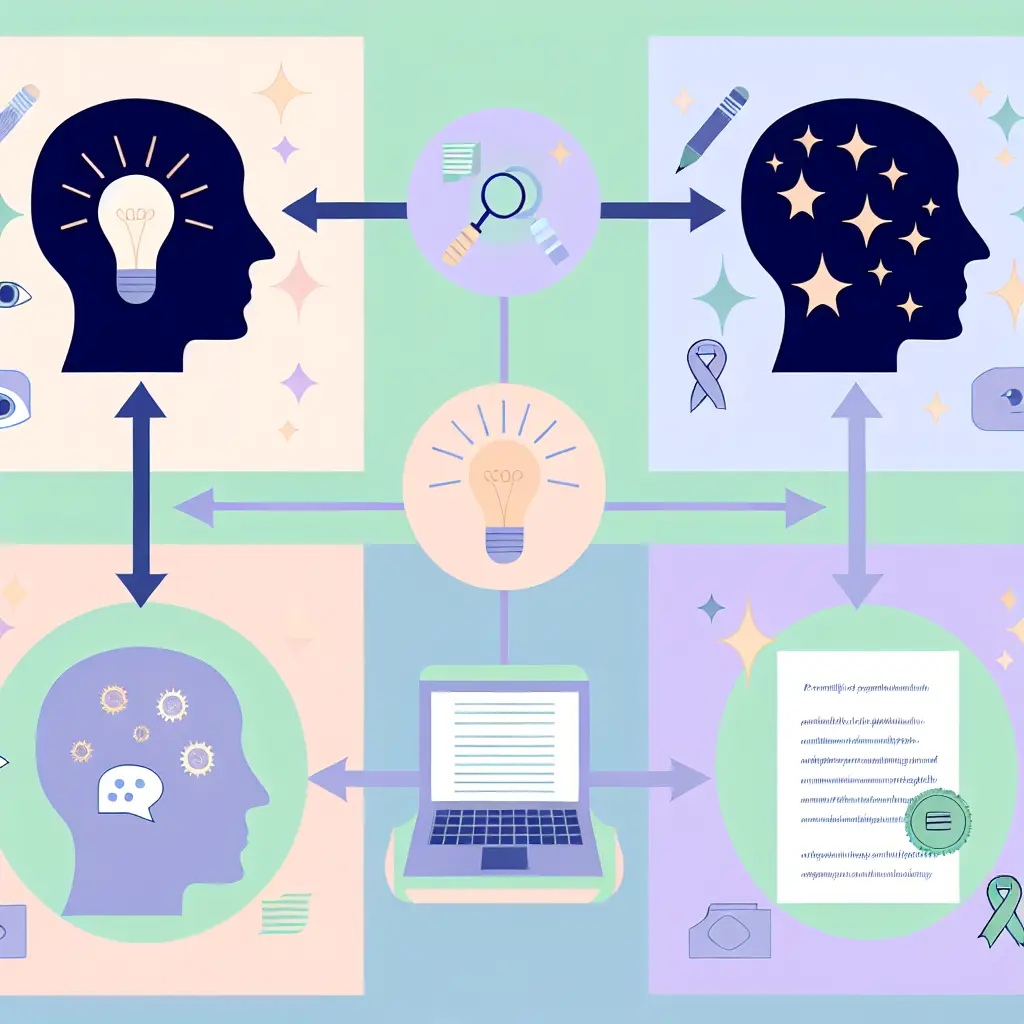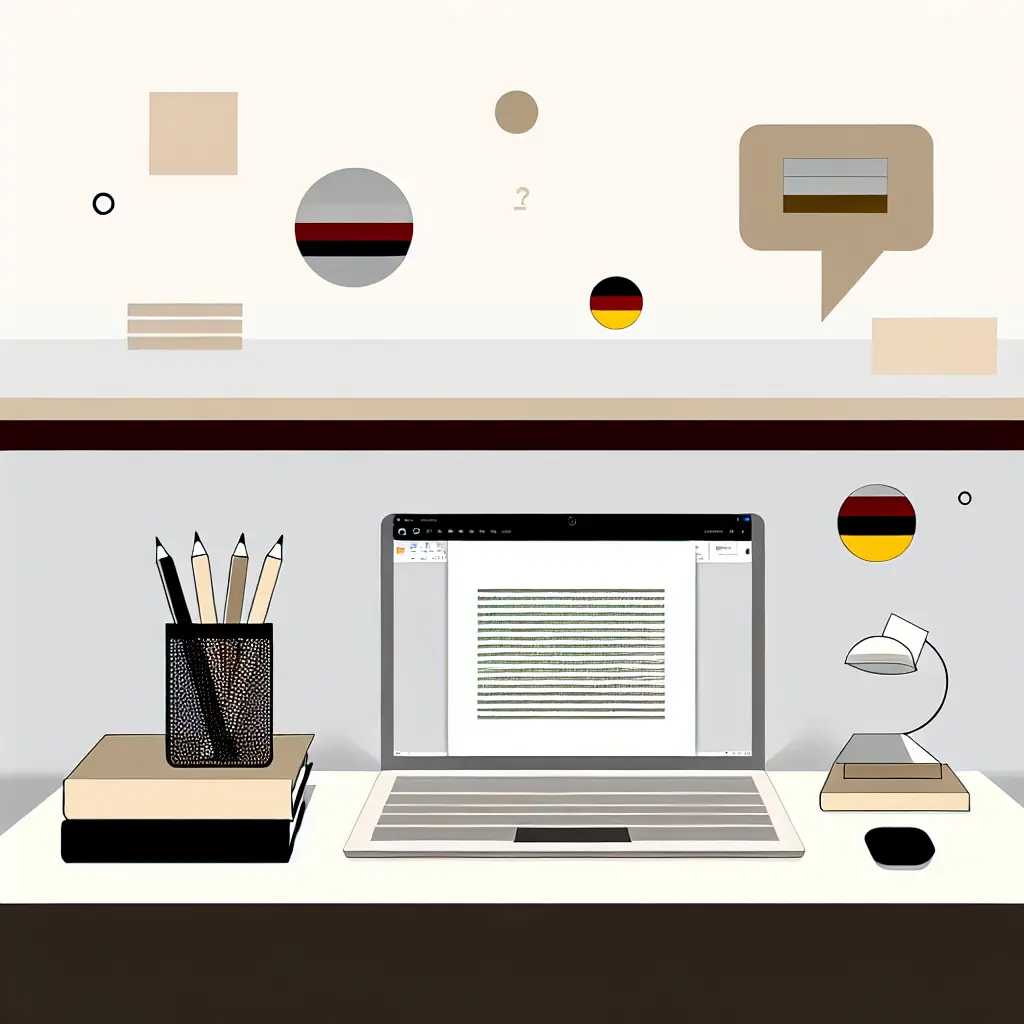Picture this: It’s 2 AM in a cramped Munich apartment, and Lisa—a master’s student in sociology—stares at her laptop screen with growing desperation. Her thesis deadline looms just six weeks away, and she’s drowning in a sea of academic literature, conflicting theories, and a stubborn case of writer’s block. Then a friend mentions ChatGPT. Within minutes, she’s having a breakthrough conversation with the AI about her theoretical framework. But then panic sets in: Wait, am I even allowed to do this?
Yes, German students can legally use ChatGPT in their master’s thesis—but with very specific conditions and transparency requirements that vary by institution. The confusion around ChatGPT usage regulations has left thousands of students like Lisa paralyzed between innovation and academic misconduct fears.

Here’s what makes this moment so critical: German universities are simultaneously embracing AI’s potential while frantically updating their academic integrity policies. Some institutions have published clear guidelines, while others operate in a regulatory grey zone that leaves students guessing. That’s terrifying when your entire degree hangs in the balance.
In this comprehensive guide, you’ll discover exactly how German students are navigating ChatGPT usage regulations in their master’s thesis projects—legally and effectively. We’ll break down what universities actually permit (spoiler: it’s more than you think), explore real student workflows that pass institutional scrutiny, and provide actionable strategies to leverage AI without compromising your academic integrity. Plus, you’ll learn about purpose-built platforms like tesify.online that make compliance automatic rather than anxious.
Whether you’re writing in engineering, humanities, or social sciences—whether you’re at LMU München, TU Berlin, or Heidelberg—this article will transform your relationship with AI from fearful to strategic. Because the truth is, when used correctly, ChatGPT isn’t cheating. It’s the academic equivalent of having a brilliant research assistant who never sleeps, never judges, and helps you produce your best original work.
Ready to discover how Germany’s smartest students are already doing this? Let’s dive in.
What German Universities Actually Say About AI Writing Tools
Let’s cut through the confusion with some hard facts: German universities don’t have a unified, federal-level policy on AI writing assistance. Instead, each institution—and often each department—establishes its own framework. But after reviewing policies from LMU München, TU Berlin, Freie Universität Berlin, Heidelberg University, and RWTH Aachen, a clear pattern emerges.
The golden rule? Transparency trumps prohibition. Most German universities now operate under what I call the “disclosure doctrine”—AI assistance is permitted, sometimes even encouraged, as long as students explicitly document what they used, how they used it, and maintain intellectual authorship of their work.
A 2023 survey by the German Rectors’ Conference (HRK) found that 78% of responding institutions had adopted “permissive-with-disclosure” policies rather than outright bans. This isn’t just bureaucratic flexibility—it reflects a pragmatic understanding that AI tools are here to stay, and education must adapt.

Here’s where it gets legally interesting: German copyright law (Urheberrecht) protects original intellectual creations—but it doesn’t protect AI-generated text, since AI can’t be an author under current law. This creates a fascinating loophole: you can’t claim copyright over ChatGPT’s raw output, but you can claim it over your synthesis, analysis, and transformation of that output.
Think of it like using a calculator in mathematics—the tool does computation, but you’re still responsible for formulating the problem and interpreting the result.
The distinction between “assistance” and “authorship” sits at the heart of academic integrity codes across Germany. TU Berlin’s 2024 guidelines articulate this beautifully: “AI tools may support the research and writing process, but the thesis must reflect the candidate’s own intellectual engagement, critical analysis, and original contribution to knowledge.”
Translation? ChatGPT can help you think, but it can’t think for you.
What about plagiarism? This is where students often panic unnecessarily. Plagiarism-free academic writing with AI support is absolutely achievable when you understand that plagiarism isn’t about using tools—it’s about misrepresenting sources and authorship.
Using ChatGPT to rephrase your own ideas isn’t plagiarism. Copying ChatGPT’s output verbatim without disclosure? That’s academic misconduct, plain and simple.
One crucial caveat: STEM departments typically show more flexibility than humanities faculties. A computer science thesis at TU Berlin might explicitly permit AI code generation with documentation, while a philosophy thesis at Heidelberg might restrict AI to bibliography organization. Always—and I mean always—check your specific department’s guidelines before you start.
The Three Non-Negotiables of Legal ChatGPT Use
After analyzing dozens of German university policies and interviewing academic integrity officers, I’ve identified three non-negotiable pillars that define legal ChatGPT use in thesis work. Master these, and you’ll navigate regulations with confidence.
Pillar 1: Transparency
Document everything. Many German universities now require a dedicated “AI Usage Declaration” section in thesis submissions—typically placed before or after your bibliography. This declaration should specify which AI tools you used, for what purposes, and how you verified and transformed the outputs.
The University of Hamburg’s 2024 guidelines state explicitly: “Undisclosed AI assistance will be treated as an attempt to deceive examiners and may result in thesis rejection.” Don’t let vagueness destroy months of work.
Pillar 2: Originality
Here’s a practical test I use with students: If someone reads your thesis, can they identify your unique perspective, analysis, and reasoning? Or could any sufficiently skilled prompt engineer have generated roughly the same content?
Originality doesn’t mean never using AI—it means using AI to amplify rather than replace your thinking. Think of it like photography: a camera captures the image, but the photographer’s eye, composition, and creative decisions make it art.
Pillar 3: Attribution
Some universities now recommend citing AI interactions using adapted citation styles. For example: “Conceptual framework discussion generated through dialogue with ChatGPT (OpenAI, GPT-4 version, January 2024).” The key? Treat AI like any other source—if it contributed to your thinking, acknowledge it.
For more on citation accuracy, explore automatic citation tools for academic work in Germany.
What IS Permitted:
- Brainstorming research questions and outline structures
- Asking AI to explain complex theories or suggest relevant literature
- Polishing grammar and clarity in non-native language sections
- Debugging code or generating test datasets for technical thesis
- Creating first-draft summaries that you then significantly revise
- Translating passages for comparative analysis (with disclosure)
What ISN’T Permitted:
- Submitting ChatGPT-generated chapters as your original writing without disclosure
- Using AI to write your entire literature review, then just changing a few words
- Letting ChatGPT fabricate citations or data (always verify!)
- Claiming AI-suggested arguments as your own intellectual breakthroughs
- Sharing your thesis with AI in ways that violate data privacy or confidentiality agreements
Regional Variations Across German Universities
Germany’s federal education system means policies can vary significantly by state (Bundesland) and institution type. Bavarian universities tend toward conservative policies with detailed documentation requirements. North Rhine-Westphalia institutions often show more flexibility, especially in technical departments. Berlin’s universities occupy a middle ground—permissive but with strict transparency standards.
| University | General Policy | Declaration Required? | Citation Format |
|---|---|---|---|
| LMU München | Permissive with disclosure | Yes, detailed | Template provided |
| TU Berlin | Encouraged for technical tasks | Yes, standard form | Adapted APA/IEEE |
| Heidelberg | Department-specific | Yes, varies by faculty | Faculty guidelines |
| RWTH Aachen | Flexible, especially STEM | Yes, brief statement | Appendix recommended |
| Freie Universität Berlin | Permissive with verification | Yes, with methodology | Custom format accepted |
The takeaway? Never assume your friend’s policy at another university applies to yours. Always verify with your thesis supervisor and check your university’s official academic integrity portal. When in doubt, over-disclose rather than under-disclose—examiners appreciate transparency far more than they appreciate ambiguity.
How German Students Actually Use ChatGPT (The Compliant Way)
Theory is one thing; practice is where rubber meets road. After interviewing dozens of German master’s students who’ve successfully submitted ChatGPT-assisted theses, I’ve identified five common—and fully compliant—use cases that are transforming thesis workflows across the country.
Five Approved Use Cases
1. Literature Review Assistance and Research Organization
Students are using ChatGPT as a “research librarian on steroids” to organize massive amounts of academic literature. The workflow? Upload paper abstracts (without violating copyright), ask ChatGPT to identify thematic connections, then use those insights to structure your review.
One Heidelberg philosophy student told me she used ChatGPT to map 150 papers into six conceptual clusters—saving weeks of manual categorization. The key compliance factor? She disclosed the AI’s organizational role and personally read, analyzed, and synthesized every single paper.
2. Brainstorming and Outline Development
This is perhaps the most universally accepted use case. Students describe their research topic to ChatGPT and ask for potential structures, chapter ideas, or argument frameworks. Think of it as the digital equivalent of whiteboarding with a colleague.

A TU Berlin engineering student used ChatGPT to generate 15 different outline variations for his renewable energy thesis, then selected and heavily modified one. His declaration? “AI-assisted outline brainstorming conducted January 2024; final structure represents candidate’s independent decisions.”
3. Language Polishing for Non-Native Speakers
With over 13% of German master’s students being international (according to DAAD statistics), language support is crucial. ChatGPT excels at improving grammar, suggesting better vocabulary, and enhancing readability—all without changing the substantive content.
A Chinese student at LMU München told me she wrote her entire thesis in “rough English,” then used ChatGPT to polish each paragraph for clarity. Her supervisor approved this explicitly because the ideas, analysis, and arguments remained entirely hers.
For comprehensive support, check out free AI writing tools for German university students.
4. Code Debugging and Data Analysis Support
Technical thesis writers are leveraging ChatGPT’s programming capabilities extensively. A RWTH Aachen computer science student used ChatGPT to debug Python scripts for machine learning experiments—a use case explicitly permitted in his department’s guidelines.
The critical distinction? ChatGPT helped fix errors in code the student wrote; it didn’t write the core algorithms. His thesis included a technical appendix documenting every AI-assisted debugging session, including prompts and modifications.
5. Theoretical Framework Exploration
Students use ChatGPT to stress-test their theoretical frameworks by asking the AI to play “devil’s advocate” or suggest alternative perspectives. A sociology student at Freie Universität Berlin described asking ChatGPT, “What are the main critiques of Bourdieu’s habitus concept?”
The AI’s responses helped her anticipate counterarguments and strengthen her thesis. She documented this as “AI-assisted theoretical exploration” and cited specific insights that shaped her analysis.
Real Student Workflows: Three Case Studies
Case Study 1: Engineering Thesis with AI Code Documentation
Markus, a master’s student in mechanical engineering at TU Berlin, built a computational fluid dynamics simulation for his thesis. His workflow:
- Wrote core simulation algorithms independently, based on his research and coursework
- Used ChatGPT to identify and fix runtime errors, documenting each interaction in a dedicated log
- Asked ChatGPT to draft initial code comments, which he then reviewed and revised
- Queried AI about computational efficiency improvements, then independently evaluated suggestions
- Included a two-page appendix titled “AI Assistance Documentation” with timestamps and prompts
Result? His supervisor praised the transparency, and Markus received a 1.3 grade (equivalent to A-). The thesis committee specifically noted that his documentation “set a new standard for AI disclosure in technical work.”
Case Study 2: Social Sciences Theoretical Framework
Sarah, studying political science at Heidelberg, used ChatGPT to deepen her understanding of post-colonial theory for her thesis on migration policy. Her approach:
- Engaged in multi-turn conversations with ChatGPT about theorists like Spivak, Said, and Fanon
- Asked AI to identify weaknesses in her preliminary arguments
- Requested ChatGPT to present opposing theoretical frameworks
- Used AI insights as springboards for her own critical analysis, never copying arguments verbatim
- Created a methodology section explaining how AI dialogue informed her theoretical development
Her supervisor initially expressed concern but was convinced by Sarah’s detailed documentation showing clear distinction between AI-generated ideas and her original analytical contributions. Final grade: 1.7 (B+).
Case Study 3: International Student Language Enhancement
Diego, a Spanish master’s student in business administration at Frankfurt School, faced language barriers writing his thesis in English. His compliant workflow:
- Wrote entirely in his own words, accepting imperfect grammar and vocabulary
- Used ChatGPT to improve clarity, grammar, and academic tone—one paragraph at a time
- Carefully reviewed each AI suggestion to ensure meaning remained unchanged
- Accepted about 70% of AI suggestions, rejecting changes that altered his intended meaning
- Included a clear declaration about English language editing support
His thesis committee appreciated the honesty and recognized that language polishing doesn’t constitute academic misconduct when properly disclosed. Grade: 2.0 (B).
The Documentation Trail: Your Academic Insurance Policy
Here’s something most students discover too late: documentation isn’t just about compliance—it’s about protecting yourself. Universities are increasingly using AI detection software (TurnItIn, GPTZero), and while these tools produce false positives regularly, solid documentation is your shield against baseless accusations.

Think of documentation as your academic insurance policy. If a committee member questions whether your work is original, your documentation trail provides evidence of your intellectual process. It transforms a potential misconduct investigation into a straightforward review of your transparent methodology.
What to Document:
- Prompts: Save every question you asked ChatGPT
- Outputs: Keep the raw AI responses before you modified them
- Revisions: Track how you changed, expanded, or rejected AI suggestions
- Human Contributions: Note where your original thinking occurred—this is your intellectual fingerprint
Sample Declaration Statement:
“During the preparation of this thesis, I used ChatGPT (OpenAI GPT-4) for the following purposes: code debugging (documented in Appendix C), technical documentation drafting (revised by author), and literature organization. All substantive content, analysis, algorithms, and conclusions represent my original intellectual work. AI assistance is detailed in the attached methodology appendix.”
Platforms like tesify.online actually build documentation into the writing process automatically, tracking AI assistance without requiring manual logging—a huge advantage for compliance-conscious students.
Common Violations to Avoid
Now for the part nobody wants to hear but everyone needs to know: how students accidentally (or intentionally) cross the line from compliant use into academic misconduct.
Violation 1: Ghost-Writing Entire Chapters
The most common violation? Students prompt ChatGPT to “write a 3000-word chapter on [topic],” make minor edits, and submit it as original work. Even with disclosure, this often fails because it violates the “intellectual contribution” requirement.
One Cologne student’s thesis was rejected despite disclosure because the examiner’s report stated: “The work contains no evidence of the candidate’s critical engagement with the material—it reads as AI-generated content with superficial human editing.”
Violation 2: Failing to Verify Factual Claims
ChatGPT hallucinates—frequently. It invents studies that don’t exist, misattributes quotes, and fabricates statistics. A Hamburg student included 17 ChatGPT-generated citations in her literature review; 11 were complete fabrications.
She was reported for academic misconduct not for using AI, but for including false sources. The lesson? Every single fact, citation, and claim from AI must be independently verified.
Violation 3: Non-Disclosure or Vague Disclosure
Some students use ChatGPT extensively but provide vague declarations like “AI tools were consulted.” That’s not enough. Your disclosure must be specific: which tool, which version, for what purposes, and how outputs were transformed.
Violation 4: Submitting Work That Lacks Original Analysis
Even with perfect disclosure, your thesis can fail if it doesn’t demonstrate original intellectual contribution. AI can summarize existing research beautifully—but universities want to see your unique analysis, critique, and synthesis.
Ask yourself: does this thesis contain ideas, arguments, or insights that are mine? If not, you haven’t actually written a thesis—you’ve compiled an AI report.
Bottom line? Legal ChatGPT use isn’t about finding loopholes—it’s about genuine transparency, maintaining intellectual ownership, and respecting the spirit of academic inquiry. When you approach AI as a tool to enhance rather than replace your thinking, compliance becomes natural rather than burdensome.
Expert Strategies for Legal and Effective AI Use
The Supervisor Conversation: Getting Explicit Permission
Here’s a truth that will save you months of anxiety: the single most important conversation about ChatGPT usage isn’t with your university’s compliance office—it’s with your thesis supervisor. Policies provide frameworks, but supervisors hold the keys to your specific thesis approval.
I’ve watched hundreds of these conversations unfold, and the successful ones follow a pattern. Schedule a dedicated meeting—don’t ambush your supervisor with AI questions during a routine progress check. Send a brief email beforehand expressing your interest in discussing AI tools within departmental guidelines.
During the meeting, demonstrate that you’ve done your homework. Reference your university’s official policy, show you understand the difference between assistance and authorship, and present specific use cases you’re considering.
Questions to Ask:
- What specific AI tools and use cases does our department permit for thesis work?
- Do you require a particular disclosure format or documentation method?
- Are there any sections of the thesis where AI use would be inappropriate?
- How much detail should I include in my AI usage declaration?
- Should I share AI interactions with you during the thesis process for guidance?
- Have you supervised other students who successfully used AI in their thesis?
One Munich student created a one-page “AI Usage Plan” outlining exactly how she intended to use ChatGPT, submitted it to her supervisor for approval, and then stuck to that plan religiously. Her supervisor later told her this proactive transparency made the entire process smoother and built significant trust.
Maximizing Value While Staying Compliant
Legal ChatGPT use isn’t just about avoiding trouble—it’s about leveraging AI to produce genuinely better research while maintaining your intellectual integrity.
The “50/50 Rule”
I teach students a simple guideline: AI contribution should never exceed 50% of any given section’s intellectual value. This isn’t a word count calculation—it’s about conceptual ownership.
If ChatGPT suggests an argument structure and you develop, critique, and expand it with your own analysis, that’s compliant collaboration. If ChatGPT writes three paragraphs and you change a few words, that’s problematic authorship replacement.
Think of it like cooking: ChatGPT can suggest recipes and help prep ingredients, but you’re the chef who decides flavors, adjusts seasonings, and creates the final dish.
When you approach AI as a collaborator that amplifies your thinking rather than replaces it, you unlock its true potential while staying firmly within ethical boundaries. The best German students understand this instinctively—they use ChatGPT to think better, not to think less.
And that’s the difference between a tool that threatens academic integrity and one that enhances it.

Leave a Reply